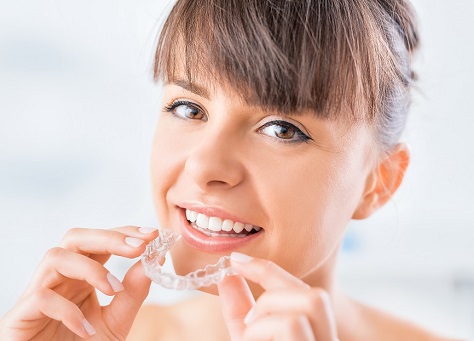When it comes to handling teeth that are crooked, misaligned or otherwise imperfect in some respect, we usually want a solution that will achieve the best results in the shortest possible time. Some individuals consider it a wonderful bonus if the solution is also as invisible and unobtrusive as possible, while others consider it mandatory that the solution be invisible and unobtrusive. However, when you consider the ever-growing list of options for perfecting the bite or straightening teeth, including the increasingly popular clear aligners, traditional metal braces remain one of the most effective and efficient solutions.
The Pros and Cons of Braces
Traditional metal braces, which have evolved considerably over the years since their initial introduction, have withstood the test of time for one basic reason: they work very well. Traditional metal braces can work wonders in cases of extreme overcrowding, underbites and overbites because they are durable and they allow your orthodontist to move teeth gradually and steadily until the ideal positioning has been achieved. Other options, like clear aligners, are not as effective at handling more complex orthodontic issues, and they cannot be easily and subtly adjusted.
In addition to be a highly efficient and effective option, traditional metal braces are often less expensive than other tooth alignment options. This means that some patients who are not financially prepared for the cost of clear aligners may yet be able to handle the lesser expense of traditional metal braces. Part of the reason for this reduced expense is the fact that brackets come in standard sizes and are affixed to individual teeth in order to hold the thin wire in place. In order to affect a change in tooth position, the orthodontist will simply change or tighten the wire and then stabilize it with bands placed over the wire and around the brackets. With clear aligners, a different aligner must be prepared for each change of tooth position, which drives the up the cost of basic materials.
One of the reasons so many individuals are drawn to clear aligners is because they can be removed while the individual eats or brushes their teeth. Unfortunately, this can also become a major drawback, because it’s easy to leave the aligner out “just a little longer”, or perhaps even forget about or misplace the aligner altogether. Since the aligner’s ability to affect positive change in the mouth is entirely dependent upon the length of time it spends in the mouth, constant removal or long absence from the mouth can slow or halt the process. Traditional metal braces, on the other hand, cannot be removed from the mouth and therefore are constantly working to bring about the desired change.
The one con for traditional metal braces that most people have difficulty overcoming is the “metal mouth” braces create. While there is no getting around the fact that metal braces will always be visible in the mouth, the truth is that their appearance has improved considerably over time. Customization options also allow patients to embrace and make the most of the experience by changing the bracket and elastic color–if they desire to do so.
Basic Braces Do’s and Don’ts
Braces need to remain firmly in place in order to do their job and move your teeth efficiently. There are some things you will need to do, and avoid doing, in order to ensure they work well:
- Don’t eat chewy, sticky or crunchy foods. Caramels, popcorn, ice and other chewy, sticky and crunchy foods can cause damage to braces, which is not only counter-productive to your goal of better-aligned teeth, it can also be inconvenient and even expensive to repair.
- Continue to brush and floss your teeth every day. There’s no denying that braces will significantly change how you brush and floss your teeth, but it’s essential that you maintain these important dental hygiene habits. Your orthodontist may be able to recommend a special toothbrush, and he can also show you some valuable brushing techniques.
- Keep all your orthodontic appointments. You may feel that you have “too many” appointments while you have braces, but this is for a good reason. The regular adjustment of your braces help them to continue to efficiently move your teeth into their proper positions. It’s therefore important to keep all your orthodontic appointments, and always contact your orthodontist if you notice any changes in your braces or mouth.
If you have any questions about braces, including whether they are the right choice for you, contact us today. We are happy to help our patients achieve their ideal smiles.





